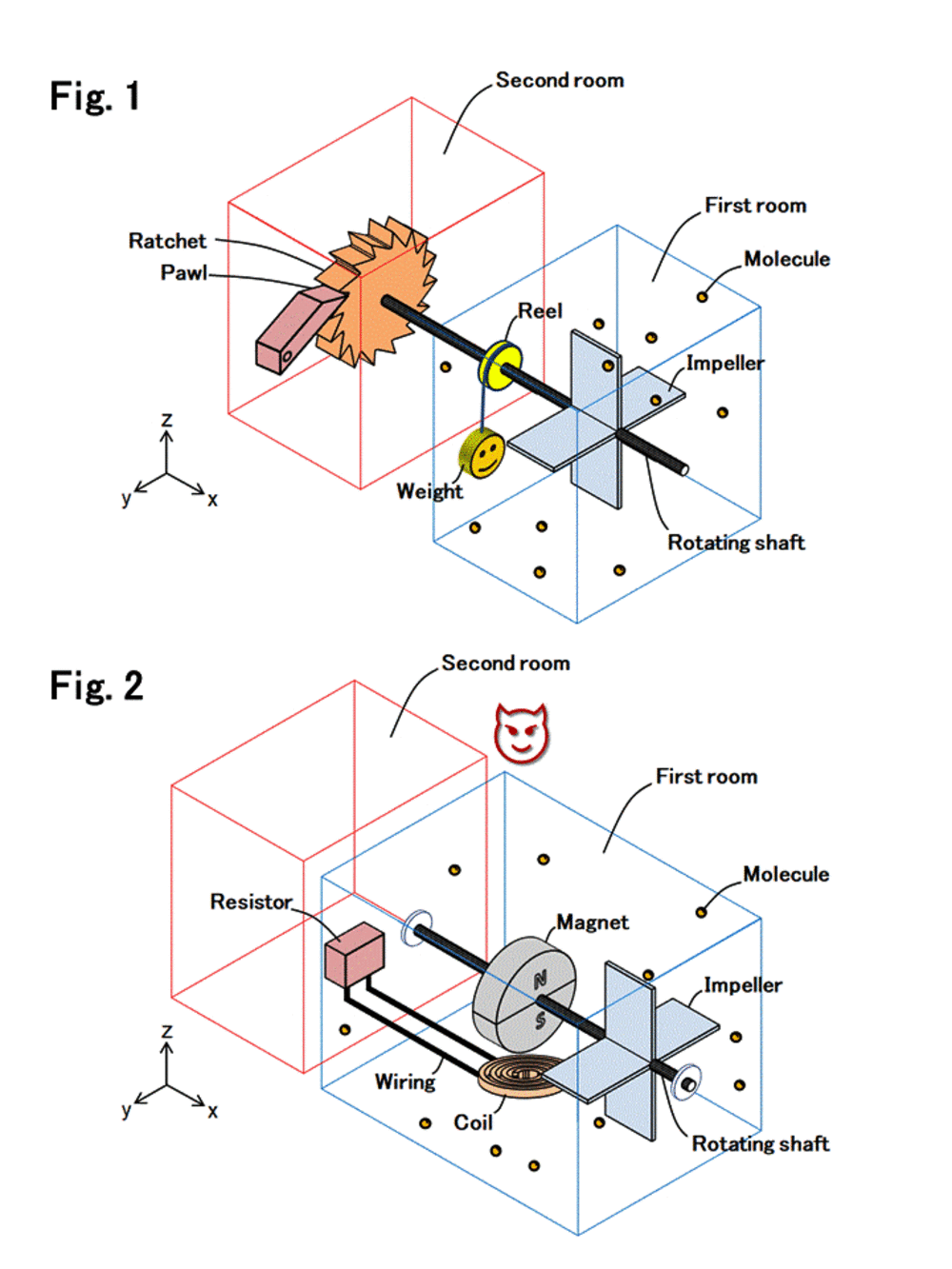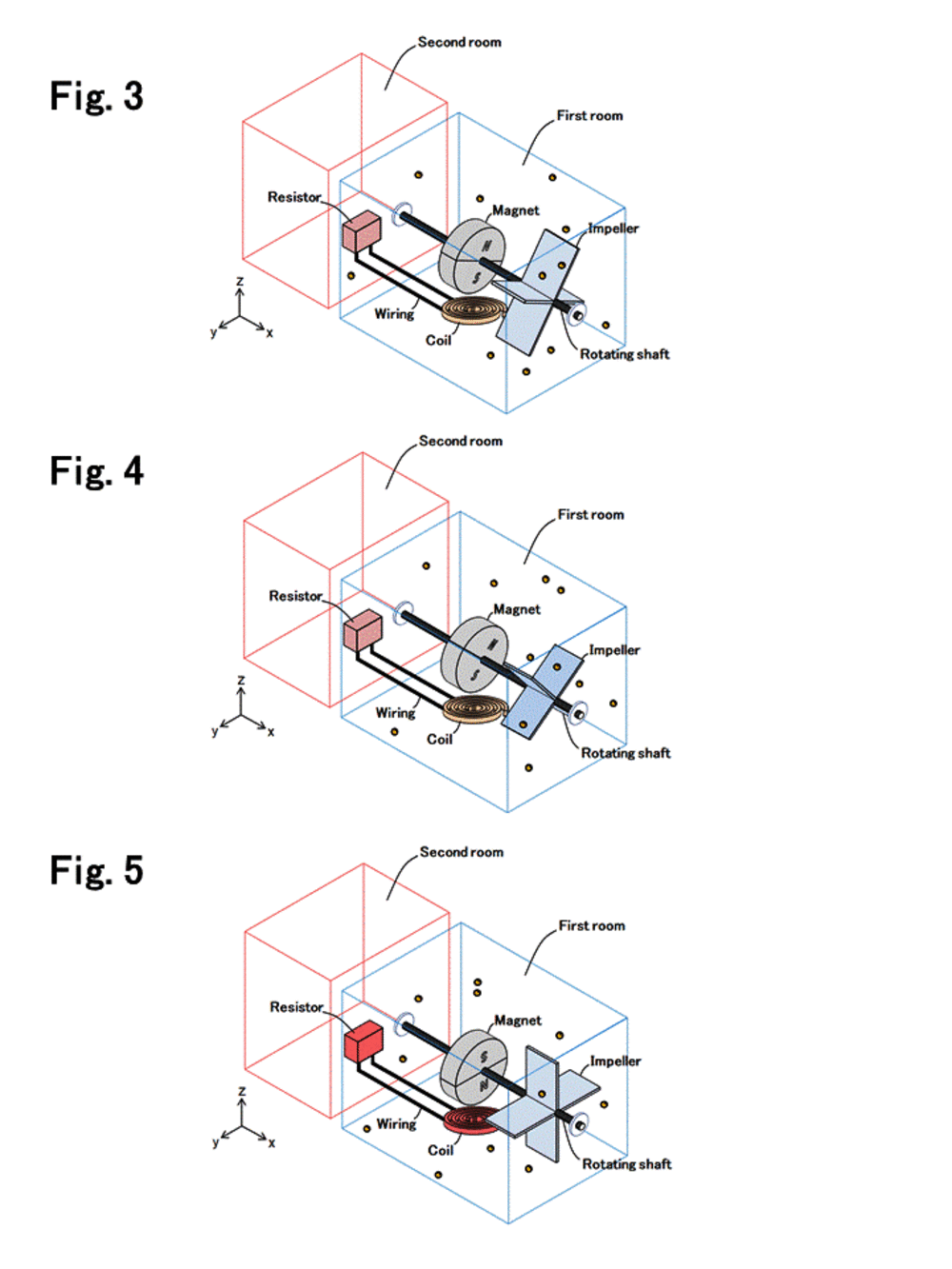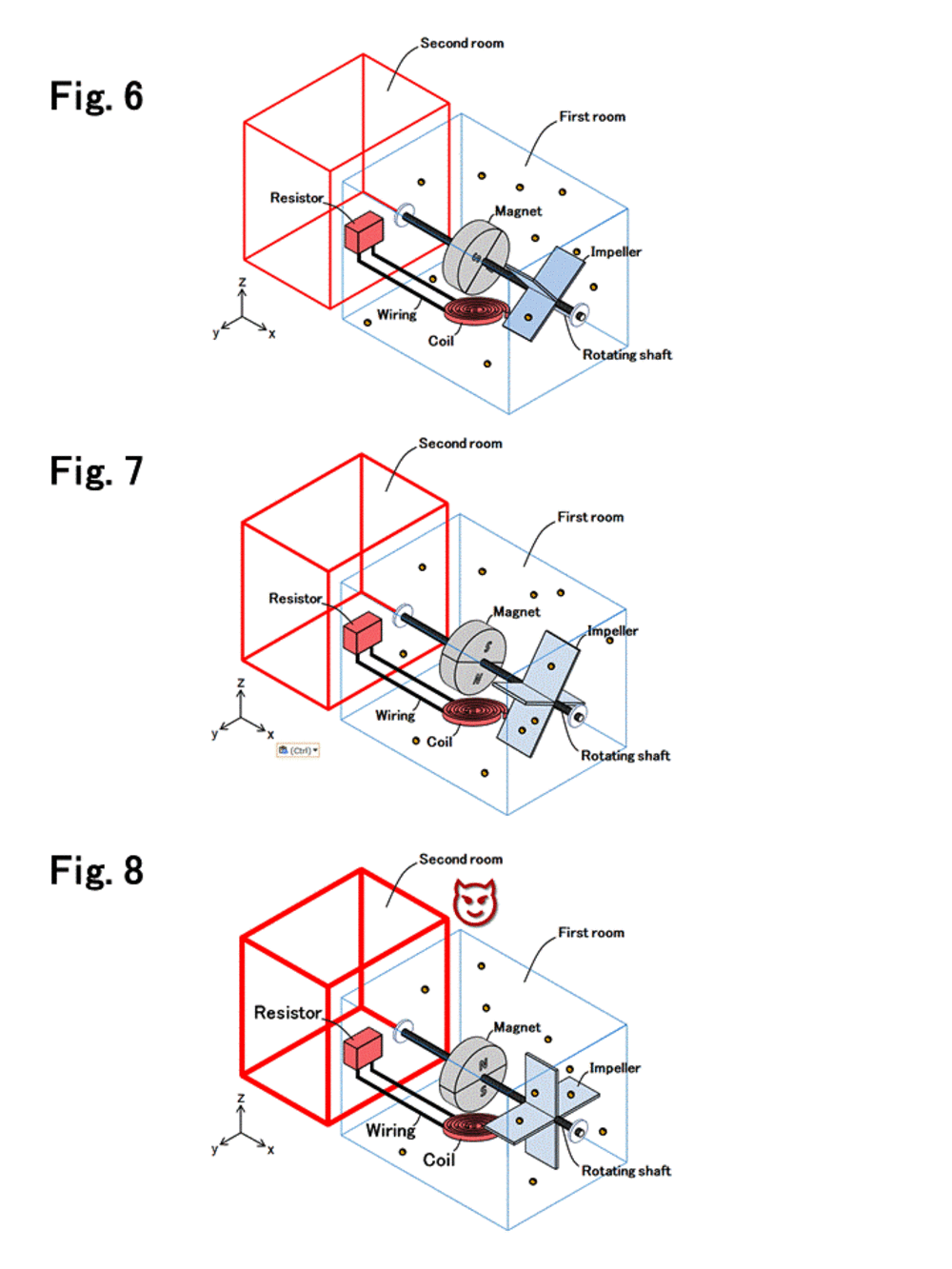Mr. Richard Phillips Feynman, a famous scientist, introduced a Brownian ratchet in his book “The Feynman Lectures on Physics” (see Figure 1). The Brownian ratchet is also referred to as Feynman’s ratchet, Feynman’s thermal ratchet and the like.
He and many other scientists deny that an impeller and a ratchet of the Brownian ratchet rotate continuously in one direction. However, as an important point, he and many other scientists have agreed the impeller and the ratchet rotate randomly because the Brownian motion is a random movement. If this is the case, then we should try to generate electricity by using the random movement. In Electromagnetic induction and Electrostatic induction, it is not necessary for an element to rotate in one direction, and power generation itself is possible even if it rotate randomly.
A micromachine shown in Figure 2 comprises a first room and a second room. In the first room, an impeller, a permanent magnet and a coil are provided. The permanent magnet and the impeller are fixed to the same rotating shaft. The coil is disposed near the permanent magnet. Submicron-scale strong permanent magnets have been developed by scientists at the University of Tokyo Japan for example. A resistor is provided in the second room.
Molecules randomly collide with the impeller. As shown in Figures 3-5, the collision of molecules with the impeller causes the impeller to randomly rotate. The rotation of the impeller is transmitted to the permanent magnet via the rotating shaft, and the permanent magnet rotates with the impeller.
When the permanent magnet rotates, electric currents are generated in the coil by electromagnetic induction. If the generated electric currents are output to an outside, the generated electric power can be used by external devices. If multiple of these micromachines are integrated, a large amount of electric power can be generated. The generated electric power may be stored in a capacitor.
Also, the micromachine shown in Figure 2 realizes Maxwell's demon. The electric currents generated by the electromagnetic induction are supplied to the resistor of the second room through the wiring. As shown in Figures 6-8, the resistor which is supplied the electric currents generates heat and the temperature of the second room rises. For example, even if the temperatures of the first and second rooms are uniform at first, a temperature difference is generated between the first room and the second room. That is, the Maxwell’s Demon can be realized.
Of course, rotations of the magnet may be suppressed by electromagnetic induction. On the other hand, according to Albert Einstein’s equations, magnitude of Brownian motion is proportional to temperature. By providing a relatively hot (and uniform) temperature environment, the magnet can rotate sufficiently, overcoming the inhibition caused by electromagnetic induction.
Some of the heat generated in the second room flows back into the first room. However, in a relatively high temperature environment, the magnet actively rotates, and the amount of power generated exceeds the heat backflow. Therefore, the temperature difference is maintained.
Video
Like this entry?
-
About the Entrant
- Name:Tomooki Seki
- Type of entry:individual
- Patent status:pending








